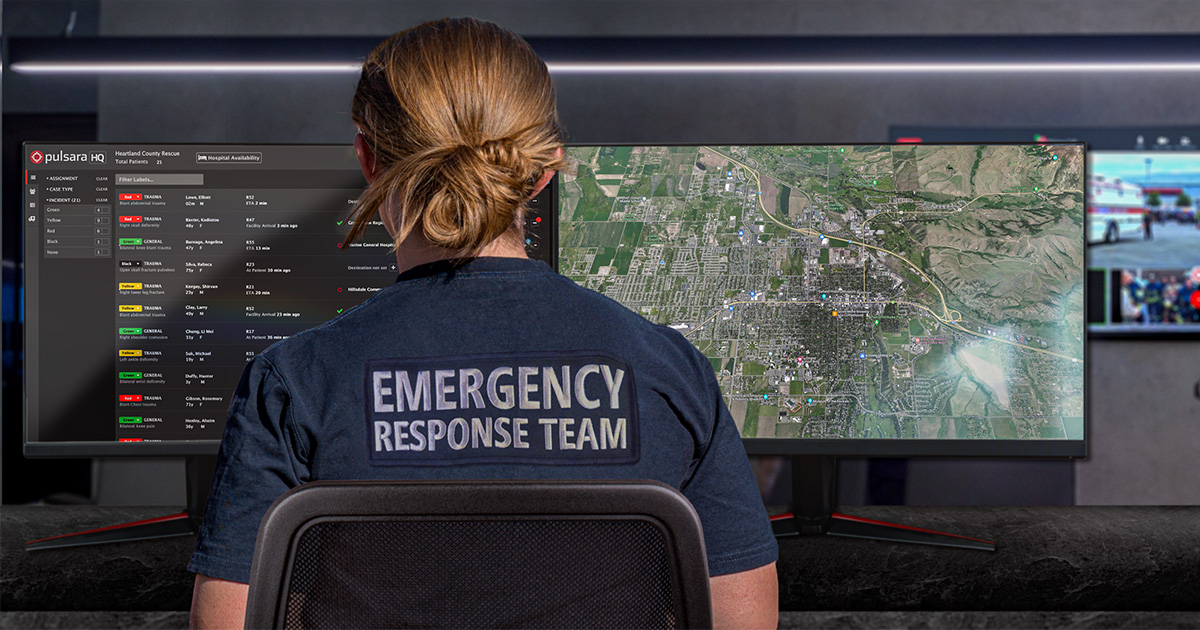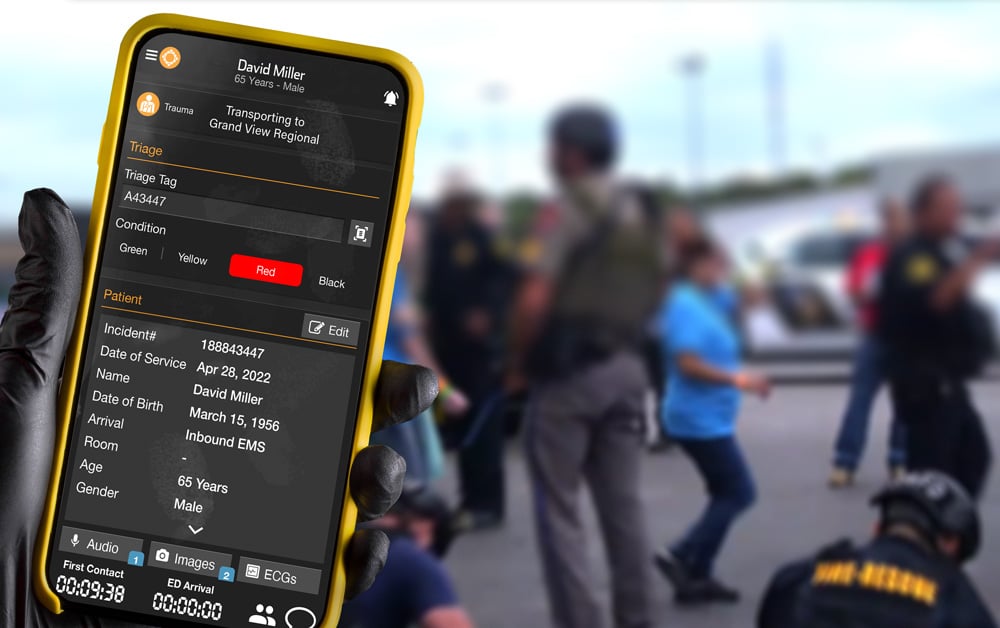Pulsara Around the World - 2025 Recap and January 2026
December Recap After an incredibly busy events year with 102 conferences, trade shows, and sponsorships, December was on the slower side for us, with...
5 min read
 Team Pulsara
:
Nov 29, 2023
Team Pulsara
:
Nov 29, 2023

EDITOR'S NOTE: This article originally appeared on EMS1.com. Special thanks to our guest author, John Erich, for EMS1 BrandFocus Staff.
__
Assistance is available from the U.S. government, but local systems have important responsibilities
When a major disaster strikes, Americans are used to seeing FEMA rush in. The Federal Emergency Management Agency is typically among the first nonlocal entities to get boots on the affected ground, with a mission of evaluating damages and needs, and then activating additional federal resources as appropriate.
But while your FEMA rep might be your best friend throughout the duration of response and recovery, they’re not the only one able to assist; nor is FEMA the only body. Other arms of the federal government can be involved and provide important assets, too – for both communication and victim management.
Here are five things to know about disaster response, keeping connected, and federal assistance if and when the big one surfaces in your area.
Since soon after the terrorist attacks of September 11, 2001, the U.S. has used the National Response Framework as its core guidance for responding to disasters and major emergencies of all types. It reflects the concepts of the National Incident Management System in its alignment of key roles and responsibilities and includes 15 Emergency Support Functions that group key capabilities, both governmental and private sector, into an organizational structure to facilitate the support of victims. These are the blueprints for using federal assets in catastrophic situations. While ESFs aren’t the designated responsibility of any single entity, each has a lead coordinating body.
EMS providers may be familiar with ESF-8, which concerns public health and medical services. Matters of vital communications fall under ESF-2.
ESF-2 is fairly straightforward. It is coordinated by the Department of Homeland Security and its Cybersecurity and Infrastructure Security Agency (CISA). Several other entities, including the FCC, can function in support. Its focuses include infrastructure restoration, coordinating comms support for incident managers, and helping stabilize and reestablish the essential platforms responders need to operate.
Assisting the communications of EMS and other first responders is an explicit part of ESF-2’s scope. It specifies both directly providing voice and data services in incident areas and supporting the restoration of necessary infrastructure. It also notes the large role that can be played by private partners: In the communications world, where many key assets are privately owned, the big carriers can quickly deploy significant resources to help get voice and data services working again for responders.
Operational communications are the sole core capability addressed in ESF-2, and FEMA and CISA are their primary executors. Short-term restorations to support local operations fall to FEMA, including the provision of communications and information technology.
ESF-8, coordinated by the Department of Health and Human Services (HHS), covers a bit more. It provides for assistance in immediate areas like medical equipment and supplies, patient care/movement, and surge management, and with bigger-picture requirements like needs assessments, medical surveillance, and behavioral care. Its core capabilities include critical transportation, mass-care services, and emergency medical services.
ESF-8 addresses public health, health care, and EMS in a lengthy section that articulates common activities like helping triage, treat, and move patients; providing care specialists to fill gaps; supporting isolation and sheltering measures; and monitoring injury and disease patterns.
In sum, the ESFs generally describe what the feds should deliver to local responders in times of duress. The who and how may vary.
FEMA will play a big role, though. What exactly can it do to help?
Restoring local comms involves its Disaster Emergency Communications program. To this end, FEMA fields six Mobile Emergency Response Support (MERS) detachments scattered around the country, each of which supports two of its regions. These assets can offer satellite, terrestrial, land mobile radio, and line-of-sight transmission systems to help restore and sustain voice, data, and video, as well as personnel to augment local providers. Other MERS focuses include life support, power generation, and logistic and operational support.
These teams also provide Mobile Emergency Operations Vehicles (MEOVs), self-contained units that can generate power and provide satellite communications to power office-type needs such as workstations and videoconferencing when there’s no infrastructure. These can serve as command posts, joint field offices and even disaster recovery centers.
The comms program falls under FEMA’s Office of Response and Recovery, which oversees directorates for response, recovery, logistics, and field operations. The response wing coordinates federal, state, and local programs to ensure delivery of immediate aid.
While it’s lower profile than FEMA, CISA can provide emergency communications support, too. It offers coordinators to help with comms planning and subject matter experts for IT needs, plus tools, training, and other support to maintain services during emergency operations.
When networks are congested following a big event, it’s CISA that makes sure responders’ voices and data get through: It’s the entity behind the Wireless Priority Service, which allows precedence for responders’ wireless comms, and the Government Emergency Telecommunications Service, which does the same for wired.
Before disaster strikes, CISA’s planning wing can help public safety organizations modernize their systems and identify gaps that could jeopardize voice, video, and data continuity.
Even while you tourniquet your comms, patients need care. Support for that can come through ASPR.
The Administration for Strategic Preparedness and Response is the lead arm of HHS in preparing for and responding to the health impacts of disasters. It controls the Strategic National Stockpile, oversees public health emergency countermeasures, and operates the National Disaster Medical System (NDMS).
The NDMS can provide fast on-the-ground help with needs like patient care and movement and fatality management support when local resources are overwhelmed. That includes equipment and supplies, along with personnel (federalized civilian professionals), transportation, and definitive care in unaffected areas. More than 1,800 U.S. civilian hospitals can provide around 100,000 beds to support operations in an emergency.
Its 55 Disaster Medical Assistance Teams (DMATs), based across the country, get health care providers and support personnel on scenes rapidly to help triage patients, provide care in austere environments, and get victims out. They may also provide primary care and relieve overburdened emergency departments. They can consist of physicians, physician assistants, nurses, nurse practitioners, paramedics, pharmacists, and other specialists.
The NDMS also fields Trauma and Critical Care Teams (TCCTs) that can set up surgery-capable field facilities anywhere.
The ultimate truth about disasters, though, is that you’d better be prepared to handle your own initial business. It will take time for any federal assets to arrive and get up to speed, so casualties and surges and scene management remain local responsibilities – the entrapped and bleeding can’t wait. Be ready to handle the first 72 hours with just basic mutual aid.
Pulsara has a solution for both the management of incident scenes and the quick, efficient care of the injured. Its app-based platform lets EMS and hospital staff communicate seamlessly in real time during events, sharing patient information, images, video, one-tap notifications, and more.

Pulsara can scan the barcode on patient wristbands, triage tags, and other unique barcode IDs to create a new patient channel or find an existing one. Photos and care data – including vital signs, demographics, interventions, and key measures like EKGs – can be added and shared in a fast and simple workflow that reduces steps and keeps care linked across all levels. Subsequent providers can be added with a simple scan. The same identifier can follow the patient throughout the care process, reducing the risk of handover error and maintaining a common awareness of where each patient is and what’s been done for them. Pulsara data is visible and can be exported or integrated into other systems for reporting.
At scenes, incident commanders can use the platform to triage and track patients, guide evacuations and reunification efforts, and keep their combined teams communicating and working efficiently. This powers better communication with receiving hospitals and others in the process.
![]()
Looking to enhance your EMS team’s ability to coordinate care and communication during Mass Casualty Incidents (MCIs) and preplanned large events? In this webinar, an expert panel of EMS leaders from Texas, Colorado, and California share their strategies for streamlining communication and improving patient outcomes. WATCH: Streamlining Crisis Response: A Deep Dive Into MCIs And Large Events

December Recap After an incredibly busy events year with 102 conferences, trade shows, and sponsorships, December was on the slower side for us, with...

Editor's Note: In July 2025, EMS1 and Fitch & Associates released their annual EMS trend survey, What Paramedics Want, proudly sponsored by Pulsara....
![[PRESS RELEASE] Published Research Finds Up to 31% Faster STEMI Treatment Times in Rural Hospital Setting with Pulsara](https://www.pulsara.com/hubfs/_1_website-page-blog-assets/pulsara-hosp-teams-assign-cardio-stemi-rn-1200x701.jpg)
Published research shows how using Pulsara, alongside standardized field activation and a focus on stakeholder relationships, improves STEMI care and...